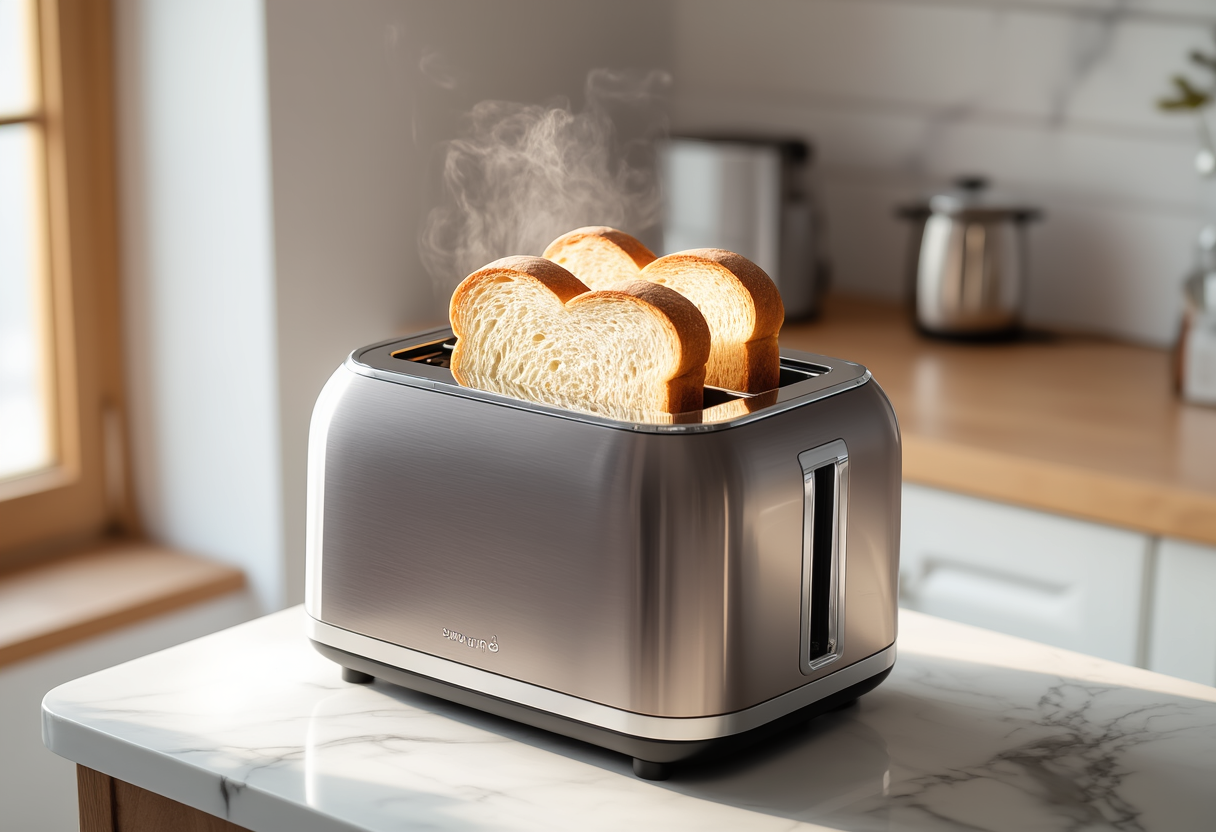The Evolution of Toasters: From Simple Gadgets to Smart Appliances
Toasters have come a long way from their simplistic origins. Today, they combine technology with convenience, becoming indispensable in modern kitchens. In this article, we'll explore the transformation of toasters, their impact on cooking habits, and the emergence of smart toasters that connect to your home network, offering new functionalities and enhanced user experience.
The Historical Journey of Toasters
Toasters have a fascinating history that dates back over a century. Initially, toasters were simple devices, often using open flames for toasting bread. As technology evolved, so did the design and functionality of toasters. Today, these appliances come equipped with numerous features that cater to the needs of modern households. The introduction of electric toasters marked a significant turning point, allowing users to manage the toasting process more effectively. Over the decades, innovations such as automatic pop-up mechanisms and adjustable browning controls have revolutionized how we use toasters. As consumer preferences changed, so did the designs, resulting in a wide variety of toaster styles that complement different kitchen aesthetics. Additionally, the advent of smart technology has introduced a new era where toasters can be connected to smart home systems, giving them unprecedented capabilities.
The Technological Advancements in Toasters
Today's toasters are more than just basic appliances; they incorporate cutting-edge technology that enhances the user's experience. Features like digital displays, built-in sensors, and customizable settings allow for a personalized toasting experience. Smart toasters, for example, can connect to your smartphone or home network, providing users with real-time updates on the toasting process. These advancements reflect the broader trend in kitchen appliances transitioning towards digital integration, catering to the tech-savvy consumer. Toasters equipped with Wi-Fi connectivity can even recommend the perfect toasting setting based on the type of bread used, showcasing the blend of convenience and innovation. Furthermore, energy efficiency has become a crucial factor in toaster design, with modern models consuming less power while delivering superior results. The integration of safety features, such as cool-touch exteriors, also ensures that toasters are safe for everyday use.
User Experience and Kitchen Dynamics
The role of toasters extends beyond merely making breakfast. In households today, toasters are essential for a variety of meals and snacks. Home cooks are increasingly experimenting with creative toasting techniques, using toasters to prepare everything from bagels to gourmet sandwiches. Understanding how different types of bread toast can enhance the quality of meals, users often seek out toasters that provide flexibility in terms of settings. This shift in usage patterns has led manufacturers to prioritize user feedback in their designs, creating products that align with contemporary cooking trends. As a result, toasters are now designed with features that cater to diverse culinary preferences, making them versatile kitchen tools. Without a doubt, the presence of toasters has transformed breakfast routines, allowing families to customize their meals and encouraging innovative cooking methods.
Environmental Considerations and Sustainable Toasters
As environmental awareness continues to rise, the appliance industry, including manufacturers of toasters, is responding with eco-friendly designs. Sustainable practices, such as energy-efficient heating elements and recyclable materials, are becoming standard in toaster production. Consumers are increasingly inclined to choose appliances that reflect their values concerning sustainability. Companies are also incorporating more durable components, aiming to extend the lifespan of their products and reduce waste. The importance of responsible consumption is highlighted as users become more conscious of the environmental impact of their kitchen gadgets. Thus, advancements in toaster technology not only focus on efficiency but also prioritize minimizing ecological footprints, appealing to conscientious buyers who wish to make sustainable choices.
The Future of Toasters: Trends and Innovations
Looking ahead, toasters are poised to undergo further transformations influenced by emerging technologies. As smart home ecosystems become more prominent, future toasters may integrate even more seamlessly with other devices, allowing for unprecedented control and personalization. Trends suggest that toasters will adopt features like voice control, enabling users to command their appliance hands-free. Additionally, we can expect to see the rise of multifunctional devices that extend beyond just toasting, such as ovens that can toast, bake, and grill simultaneously. Manufacturers are likely to continue innovating materials for improved performance and aesthetics, ensuring that toasters remain a focal point in modern kitchens. This potential evolution indicates that the humble toaster will continue to adapt to meet the changing needs and preferences of consumers worldwide.
Conclusion: Embracing the Versatility of Toasters
In conclusion, toasters have transformed significantly over the years, evolving from basic gadgets into smart, multifunctional appliances that elevate the culinary experience. Their impact on cooking practices, combined with technological advancements and sustainability initiatives, highlights their importance in modern kitchens. As we embrace the future, toasters will likely continue to shape how we prepare meals, making it essential for both manufacturers and consumers to adapt to changing demands. The journey of the toaster reflects broader societal trends towards convenience, innovation, and sustainability, encapsulating the essence of today’s kitchen technology.
